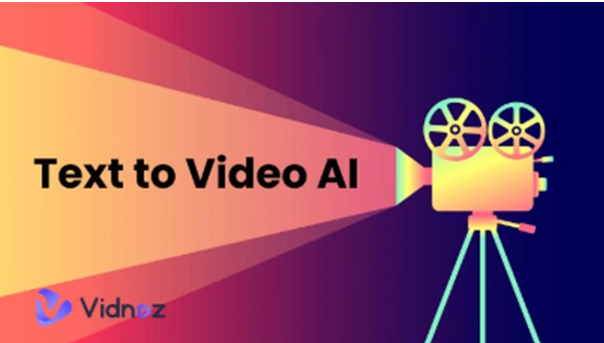In the era of artificial intelligence, the way we interact with digital content is evolving rapidly. Two of the most fascinating innovations transforming communication today are text to speech and talking photo AI technologies. From making content more accessible to enhancing entertainment, marketing, and education, these tools are bridging the gap between written words and lifelike digital expression.
What Is Text to Speech?
Text to speech (TTS) is an AI-powered technology that converts written text into spoken voice output. With natural language processing (NLP) and advanced machine learning, TTS systems can read out text in a realistic, human-like manner. This technology has been integrated into various applications, such as smartphones, e-learning platforms, navigation systems, and customer support chatbots.
The evolution of TTS has been remarkable. Early versions produced robotic, monotonous sounds, but modern TTS tools can now mimic human intonations, pauses, and emotions. This makes listening experiences more natural and engaging. Popular examples include Google’s TTS, Amazon Polly, and Microsoft Azure Speech, which offer multiple voices and language options to suit different audiences.
The Rise of Talking Photo AI
Talking photo AI takes this innovation a step further. It uses artificial intelligence to animate still photos, making them talk, smile, or even sing. By combining deep learning and facial motion synthesis, talking photo AI tools analyze a face and map voice or speech patterns onto it, resulting in realistic lip movements and expressions.
This technology is being used in creative and commercial ways. For instance, people can bring old family portraits to life, businesses can create talking avatars for customer service, and educators can use it to make interactive learning content. It’s a fascinating blend of art and technology, allowing static images to tell stories like never before.
Popular AI platforms such as D-ID, HeyGen, and Wombo AI have made talking photo creation accessible to everyone. With just a single photo and an audio clip or text input, users can create stunningly lifelike talking videos in minutes.
How Text to Speech and Talking Photo AI Work Together
When text to speech technology is combined with talking photo AI, the results are even more powerful. A user can type any text, and the system converts it into natural-sounding speech. That audio is then synced with a photo or avatar, producing a realistic talking video.
For example, a brand can upload a spokesperson’s photo, type a promotional message, and instantly generate a video ad without recording voiceovers or hiring actors. Similarly, educators can use these tools to create engaging lessons where historical figures “speak” about their lives. The combination of these technologies saves time, reduces costs, and boosts creativity.
Applications of Text to Speech and Talking Photo AI
- Education and E-Learning:
TTS helps students with reading difficulties or visual impairments by reading content aloud. Talking photo AI adds a visual element, making lessons more engaging and interactive. - Marketing and Branding:
Businesses are using AI-generated talking avatars to explain products or deliver personalized greetings. It’s an affordable alternative to professional video production. - Entertainment:
From music videos to memes, talking photo AI is being used to animate celebrities, fictional characters, and historical figures. Combined with text to speech, it opens endless creative possibilities. - Customer Support:
AI avatars powered by TTS can serve as virtual assistants on websites, answering FAQs or guiding customers through services in a friendly, human-like manner. - Accessibility:
One of the biggest advantages of TTS is its ability to make digital content more inclusive. It allows people with visual or learning disabilities to access information effortlessly.
Benefits of Using These AI Tools
- Cost-Effective: No need for cameras, microphones, or actors.
- Multilingual Support: TTS systems support dozens of languages, helping reach global audiences.
- Time-Saving: Videos and voiceovers can be generated instantly.
- Consistency: The AI maintains uniform tone and quality across all outputs.
- Creativity Boost: Users can experiment with various voices, expressions, and styles.
Ethical Considerations and Responsible Use
While these technologies offer many advantages, they also raise ethical questions about privacy and authenticity. For instance, realistic talking photo AI videos can be misused for fake content or impersonation. Therefore, it’s important for creators to use such tools responsibly and ensure transparency in their projects.
Platforms offering text to speech and talking photo AI are now integrating watermarking and content verification features to prevent misuse. Responsible usage ensures that this technology remains a tool for creativity, education, and innovation rather than deception.
The Future of AI-Driven Communication
As AI continues to advance, we can expect even more sophisticated versions of text to speech and talking photo AI. Future updates will likely feature hyper-realistic voices with emotional depth, synchronized gestures, and personalized avatars that adapt to users’ tones and styles.
From storytelling and digital marketing to accessibility and personal communication, these technologies are redefining how we connect in the digital age. The world is moving from text-based interactions to AI-driven conversations, where every image can speak and every idea can find a voice.
Conclusion
The combination of text to speech and talking photo AI is revolutionizing digital content creation. What once required expensive video production and professional narration can now be achieved in minutes using AI. As these tools continue to evolve, they will empower individuals and businesses to communicate more effectively, creatively, and inclusively — giving every picture a voice and every story a face.













Leave a Reply